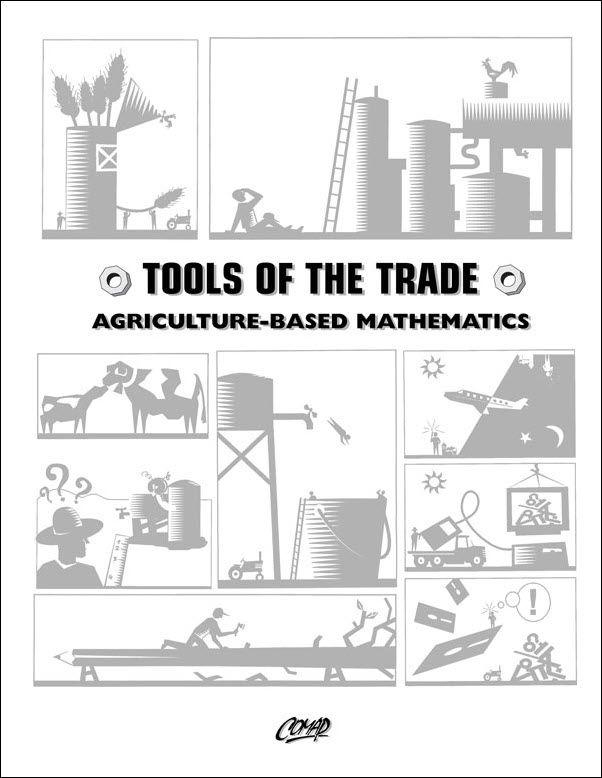Tools of the Trade: Unit 8: More on Growing Degree Days
Author: Project Co-Directors: Dave Engelhard, Michael Kallaher & Jack Robertson
Unit 8: More on Growing Degree Days: Purpose of Unit:
To give more exercises on growing degree days; to give practice in interpreting conceptual, qualitative, and quantitative information from graphs and tables. There are two sets of student pages, the first appropriate for most students, the second set for calculus students.
Note: The information below was created with the assistance of AI.
Level of Mathematics
Target Audience:
General Set I: Suitable for grades 7–10, focusing on data interpretation, arithmetic, and basic graph reading.
Set II (Calculus Track): Designed for high school calculus students, including topics like:
Riemann sums
Fundamental Theorem of Calculus
Interpreting area under curves and rates of change.
Skills Involved:
Arithmetic (averages, totals)
Data interpretation from graphs and tables
Functional relationships and slope
Introductory integration concepts (for advanced students)
Application Areas
Primary Context:
Agriculture and Plant Development
Interpreting Growing Degree Days (GDD) as a measure of accumulated heat for plant growth.
Comparing climate suitability across geographic regions using temperature-based models.
Broader Applications:
Climatology and agricultural planning.
Understanding how temperature profiles affect crop choices and maturity rates.
Connections to energy usage, ecology, and geographic information systems (GIS).
Prerequisites
For All Students:
Understanding how to compute averages from daily high and low temperatures.
Interpreting graphs (line and bar) and basic data analysis.
For Calculus Students (Set II):
Familiarity with:
Riemann sums and integrals
Interpreting functions and their derivatives
Slope as a rate of change
Notation like
max {0, value} max {0,value}
Suggested Preparatory Units:
Unit 6 (Intro to GDD)
Unit 7 (Modeling with GDD and emergence data)
Subject Matter
Concepts Covered:
Definition and Computation of GDD:
GDD = max {0, High + Low 2 − Base} GDD = max {0, 2 High + Low − Base}
Emphasis on no negative values for GDD (below freezing, GDD = 0).
Graph Interpretation and Analysis:
Accumulated Growing Degree Days (AGDD) graphs for multiple cities (Pullman, Davis, Purdue, Saskatoon).
Climate-based comparisons across regions.
Data Computation Tasks:
Estimating total GDD for specific months.
Using bar graphs of monthly temperatures to compute AGDD.
Qualitative Climate Analysis:
Analyzing concavity, slope, and seasonality from graphs.
Distinguishing locations based on temperature stability and season length.
Advanced (Calculus) Topics:
Riemann sums as approximations of integrals.
Understanding AGDD(t) as an accumulation function:
AGDD(t)=f(t) = average temperature at time t
Real-World Connections:
Students are prompted to compare local climates to graphed locations.
Explore agricultural decisions like planting "early" varieties based on regional GDD norms.
Correlation to Mathematics Standards
Common Core State Standards (CCSS):
Middle Grades:
6.SP.B.4–5: Summarize numerical data sets and relate them to real-world contexts.
7.RP.A.2: Recognize and represent proportional relationships in data (e.g., temperature to GDD).
8.F.B.4: Construct and interpret linear models.
8.SP.A.1–4: Investigate patterns of association in bivariate data.
High School Algebra/Functions:
HS.F-IF.4–6: Interpret functions in terms of context (e.g., GDD as function of time).
HS.S-ID.B.6a: Fit a function to data and use it for predictions.
Calculus (Set II):
Fundamental Theorem of Calculus.
Interpreting integrals as area under a curve.
Slope of AGDD as derivative = average temperature.
Mathematical Practices:
MP1: Make sense of problems and persevere in solving them.
MP2: Reason abstractly and quantitatively.
MP4: Model with mathematics.
MP5: Use appropriate tools strategically.

Mathematics Topics:
Application Areas:
Prerequisites:
You must have a Full Membership to download this resource.
If you're already a member, login here.